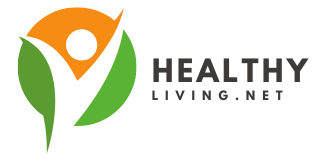Healthy eating tips: You daily diet can have excess salt, here’s how to reduce it
Making small changes in your diet go a long way, especially when it comes to sodium intake. With small adjustments, you can protect your heart, improve blood pressure, and still enjoy flavourful food. Here’s how.
Salt makes everything taste better, but too much of it can put your health at risk. Sodium, a key component of salt, is essential for body functions, yet most people consume far more than they need. Multiple studies suggest that excess sodium is linked to high blood pressure, heart disease, and stroke.
Risks of high sodium diet
According to the National Heart, Lung, and Blood Institute (NHLBI), the DASH (Dietary Approaches to Stop Hypertension) diet is one of the most effective ways to lower sodium intake and support heart health. DASH focuses on whole grains, fruits, vegetables, nuts, lean proteins, and healthy oils while limiting high-sodium processed foods. Study finds that the DASH eating plan helps reduce high blood pressure and LDL cholesterol, which are among the major risk factors for heart disease. It also suggests that adults who follow DASH without changing sodium intake can lower blood pressure within weeks. Also, those with high blood pressure who cut sodium intake in half experienced the most significant blood pressure reductions.
Understand hidden sodium: Think you’re safe because you don’t add extra salt to your food? Think again. Processed foods, canned soups, bread, cheese, and even salad dressings are loaded with hidden sodium. Reading labels is key to making better choices.
Fast food and restaurant meals are sodium bombs: Eating out often? Know that many restaurant dishes contain more than the daily recommended sodium intake in just one meal. If you have to eat out then opt for grilled, steamed, or fresh options and ask for sauces and dressings on the side.
Hidden salt in processed foods: Many electrolyte drinks marketed for hydration contain added sodium. If you’re not sweating excessively from intense workouts, stick to water or natural alternatives like coconut water
Cutting back doesn’t mean cutting out: Sodium is necessary, but moderation is key. The recommended daily intake is about 2,300 mg (one teaspoon of salt), yet most people consume nearly 3,450 mg daily. Reducing sodium by just 1,000 mg can significantly improve heart health.
How to reduce salt intake in daily diet: Try these quick swaps
Replace salt with herbs, lemon, or vinegar: Instead of adding table salt to your roasted vegetables, season them with garlic, rosemary, and a squeeze of lemon for a fresh, tangy taste.
Choose fresh or frozen vegetables over canned: Instead of using canned spinach (which often contains added salt for preservation), opt for fresh or frozen spinach, which is naturally low in sodium.
Opt for unsalted nuts instead of salted snacks: Swap salted roasted almonds for plain raw almonds or unsalted roasted ones to enjoy the crunch and nutrients without the extra sodium.
Pick low-sodium labels when buying packaged foods: When buying soups or sauces, choose low-sodium or no-added-salt versions, such as a low-sodium tomato sauce instead of a regular one with high salt content.

